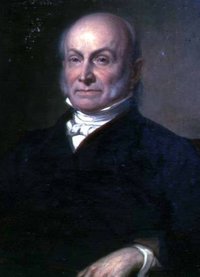 For 166 years, only John Quincy Adams could claim to be both the son of a president and a president himself. Like George W. Bush, he would also have his father’s first name. And like his father John Adams, he would be a one-term president. His tenure as Secretary of State was a much bigger success than his Presidency. He negotiated the annexation of Florida, ended the War of 1812, negotiated our northern border with Canada, and was the author of the Monroe Doctrine. But his tenure as the sixth President of the United States from 1825-1829, was sabotaged by a Congress controlled by many of political enemies, including Andrew Jackson, to whom he’d lose the election of 1828.
For 166 years, only John Quincy Adams could claim to be both the son of a president and a president himself. Like George W. Bush, he would also have his father’s first name. And like his father John Adams, he would be a one-term president. His tenure as Secretary of State was a much bigger success than his Presidency. He negotiated the annexation of Florida, ended the War of 1812, negotiated our northern border with Canada, and was the author of the Monroe Doctrine. But his tenure as the sixth President of the United States from 1825-1829, was sabotaged by a Congress controlled by many of political enemies, including Andrew Jackson, to whom he’d lose the election of 1828.
J.Q. Adams’ post-presidential career was far more successful than his presidency, and he went on to enjoy the last seventeen years of his life as a member of the U.S. House of Representatives as a delegate of Massachusetts. During my visit to his hometown of Braintree (now Quincy), Massachusetts. I was able to visit most of the sites relevant to the life of John Quincy Adams.
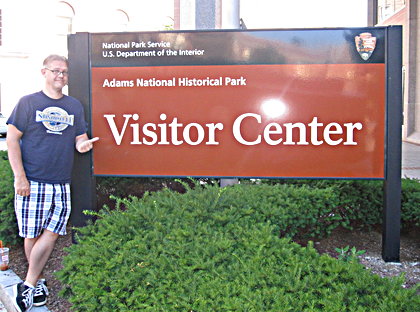
The Adams National Historical Park included the John Adams Birthplace, the John Quincy Adams Birthplace, and Peacefield
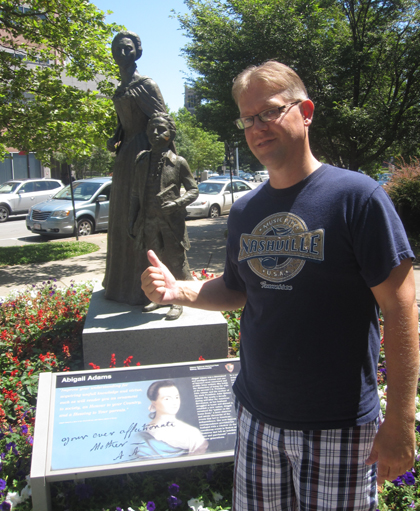
Statue of Abigail Adams and a young John Quincy Adams in Quincy
Friday, July 6, 2012 – John Quincy Adams Birthplace – John Quincy Adams was born on July 11, 1767, to future President John Adams and future First Lady Abigail Adams. The home in which he lived had been purchased by his grandfather Deacon John Adams Senior in 1744. This house had actually been built in 1663, making it 18 years older than the birthplace of his father.
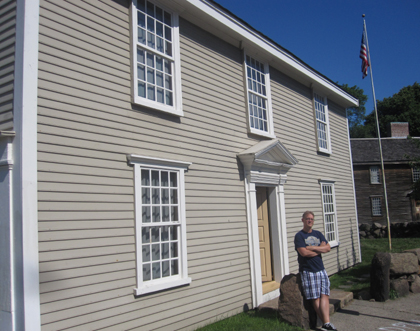
Outside the John Quincy Adams Birthplace, and home of President John Adams. The birthplace of John Adams can be seen in the background.
John and Abigail would inherit this home and move in after they were married, and eventually raise four children here. The elder Adams would run his law practice out of this home and compose the Constitution of the Commonwealth of Massachusetts here. It is said that Abigail and the children could hear the raging guns of the Battle of Bunker Hill not far away. The family would move out of this home and into Peacefield when John Quincy was 21 years old.
Friday, July 6, 2012 – Peacefield, Home of John Quincy Adams – The Adams family would occupy Peacefield from 1788 until 1921. The home had been built in 1731. John Quincy and his wife Louisa lived with his parents, until the death of his father in 1826, at which time J.Q. took full possession. Two further generations would continue to live in the home until 1921.
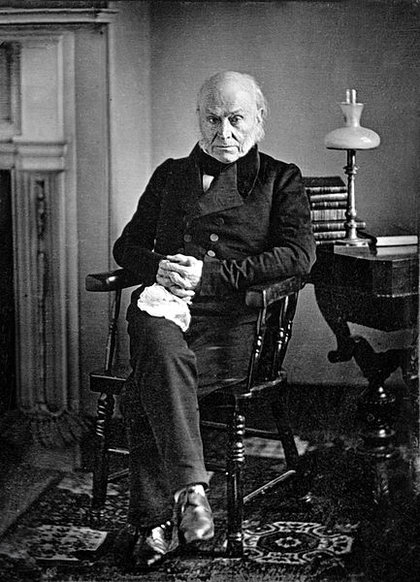
This daguerreotype photo image taken in 1843 made Adams the earliest President to be photographed (although a photo of our ninth President William Henry Harrison pre-dated this photo by two years)
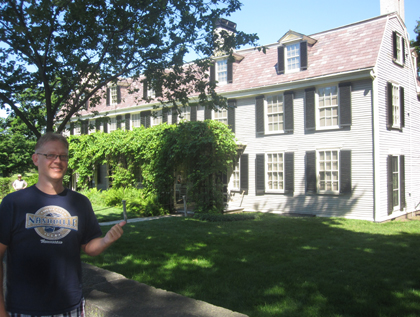
Peacefield
As an adjunct to the Peacefield home is the Stone Library, which was completed in 1870, and built at the request of John Quincy Adams in his will. It contains 14,000 books that belonged to the Adams family. Built of stone, it is fireproof, but as we learned from our tour guide Don, it was not burglar proof; in 1996, a pair of men who had taken the tour returned to steal the Mendi Bible that had been signed and presented to John Quincy by the group of slaves who had mutinied on the Amistad and been defended by Adams. The Bible was later recovered in a locker by the FBI – now water-damaged by being stored under wet towels.
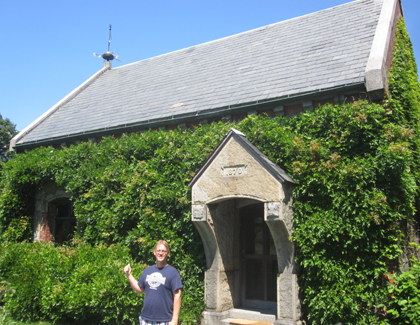
The Stone Library
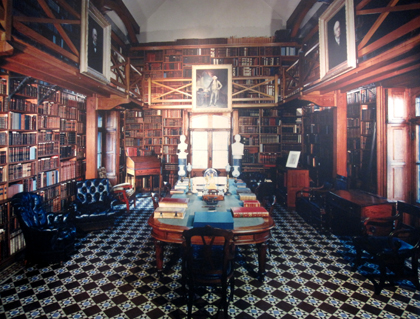
No photos were allowed inside the libray, but this is a postcard of the interior
Friday, July 6, 2012 – Grave of John Quincy Adams – John Quincy Adams passed away in United States Capitol in Washington D.C. on February 23, 1848, having collapsed two days earlier on the floor of the House of Representatives.
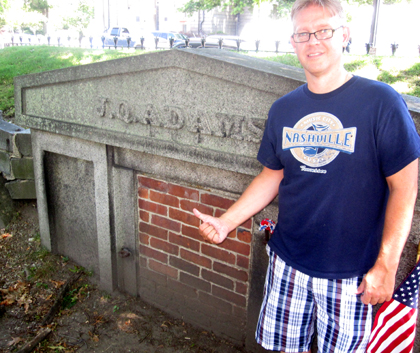
Original location in Hancock cemetery where the Adams family was interred. Note how the J.Q. that was added now puts the wording off-center.
He was initially interred in the Congressional Cemetery in Washington D.C., and then moved back to his family crypt in Hancock cemetery across the street from the United First Parish Church, where he attended in Quincy, Massachusetts. At the time his father and mother were also interred in the family crypt, and the letters “JQ” were added to the “Adams” on the family vault. John Quincy had already commissioned that the basement of his church would be constructed as a crypt to house the remains of his parents.
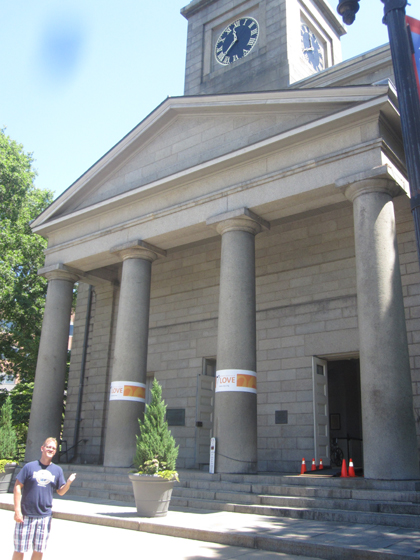
Outside the United Church Parish Church
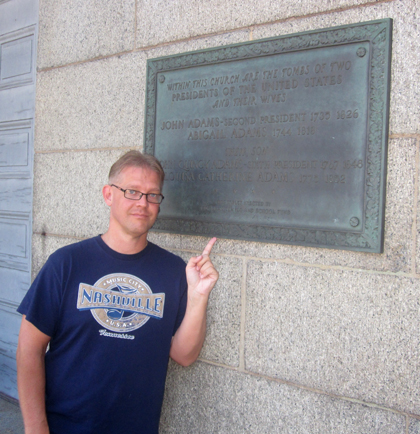
Plaque on the wall of the church
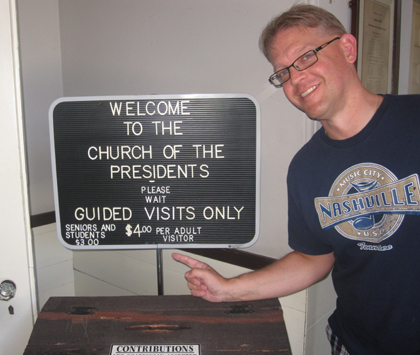
Sign in the church indicating the “Church of the Presidents”
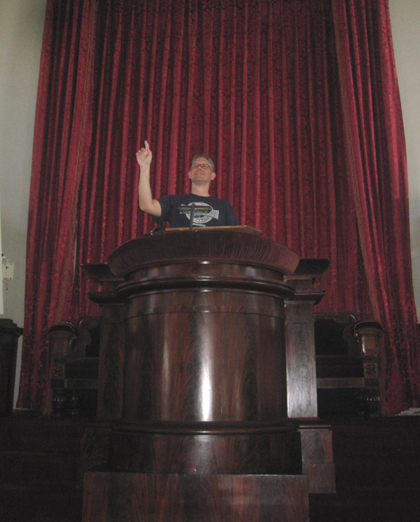
Lecturing from the pulpit inside the church
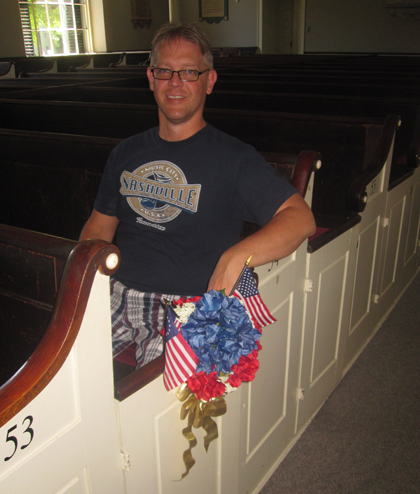
In the spot where John Quincy Adams would sit during the weekly church service
Once the area in the church was completed, the remains of John Adams and his wife Abigail, as well as John Quincy Adams and his wife Louisa Catherine, were moved there. For a while, there was no access for visitors to see the actual tombs. In lieu of that, there was a marker placed in the church for each couple stating that their final resting places were located below. The area was eventually opened for public visitation.
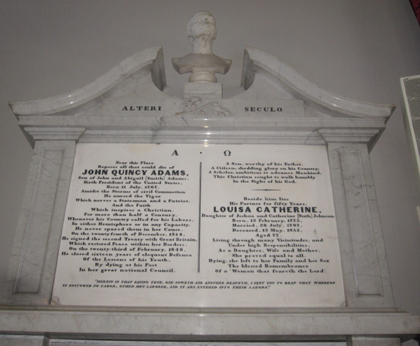
Memorial marker in the church indicating that “Near this place reposes all that could die of John Quincy Adams”
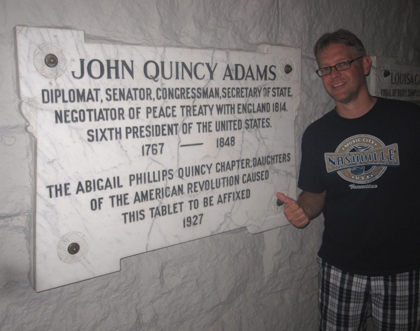
John Quincy Adams marker outside the crypt
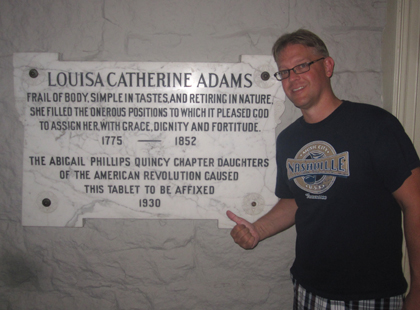
Louisa Catherine Adams marker outside the crypt
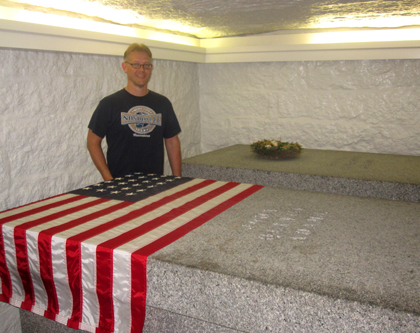
John Quincy Adams tomb, with Louisa Catherine behind him
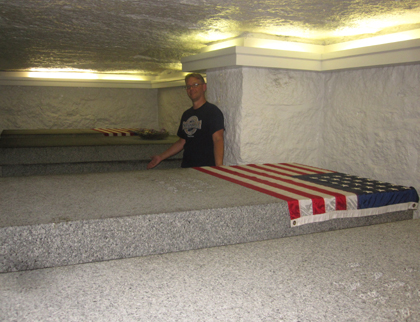
Overview of the four tombs, with John Quincy and Louisa Catherine being the two in the foreground
It is certainly one of the most desirable Presidential gravesites to visit for the simple fact that you get two for the price of one. A guide gives a quick tour of the church itself and then allows visitors into the crypt to see the four graves inside.
Continue to the next President…
Return to Friday 2012 in Boston…
Leave a Reply